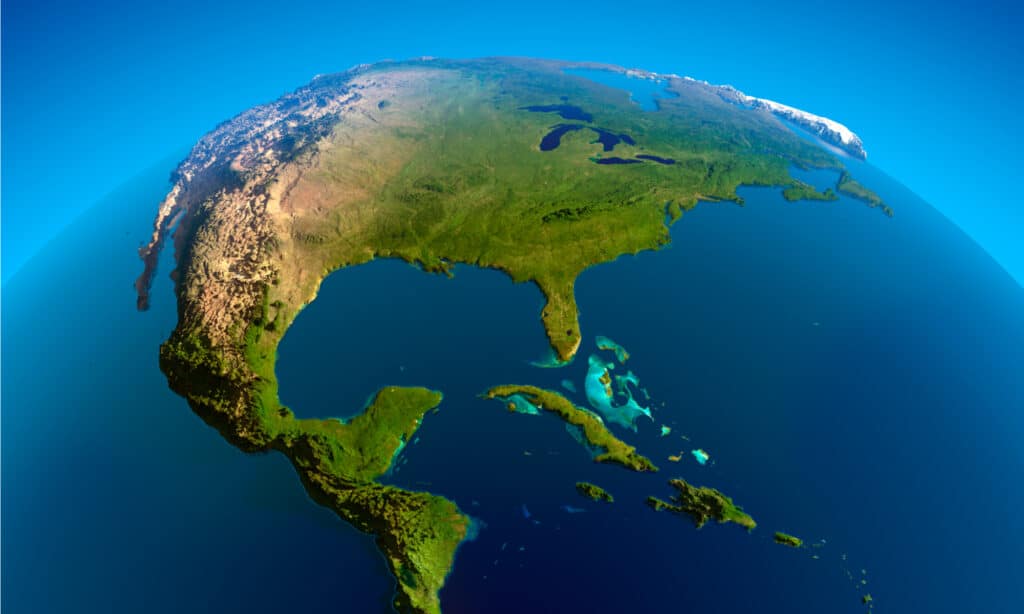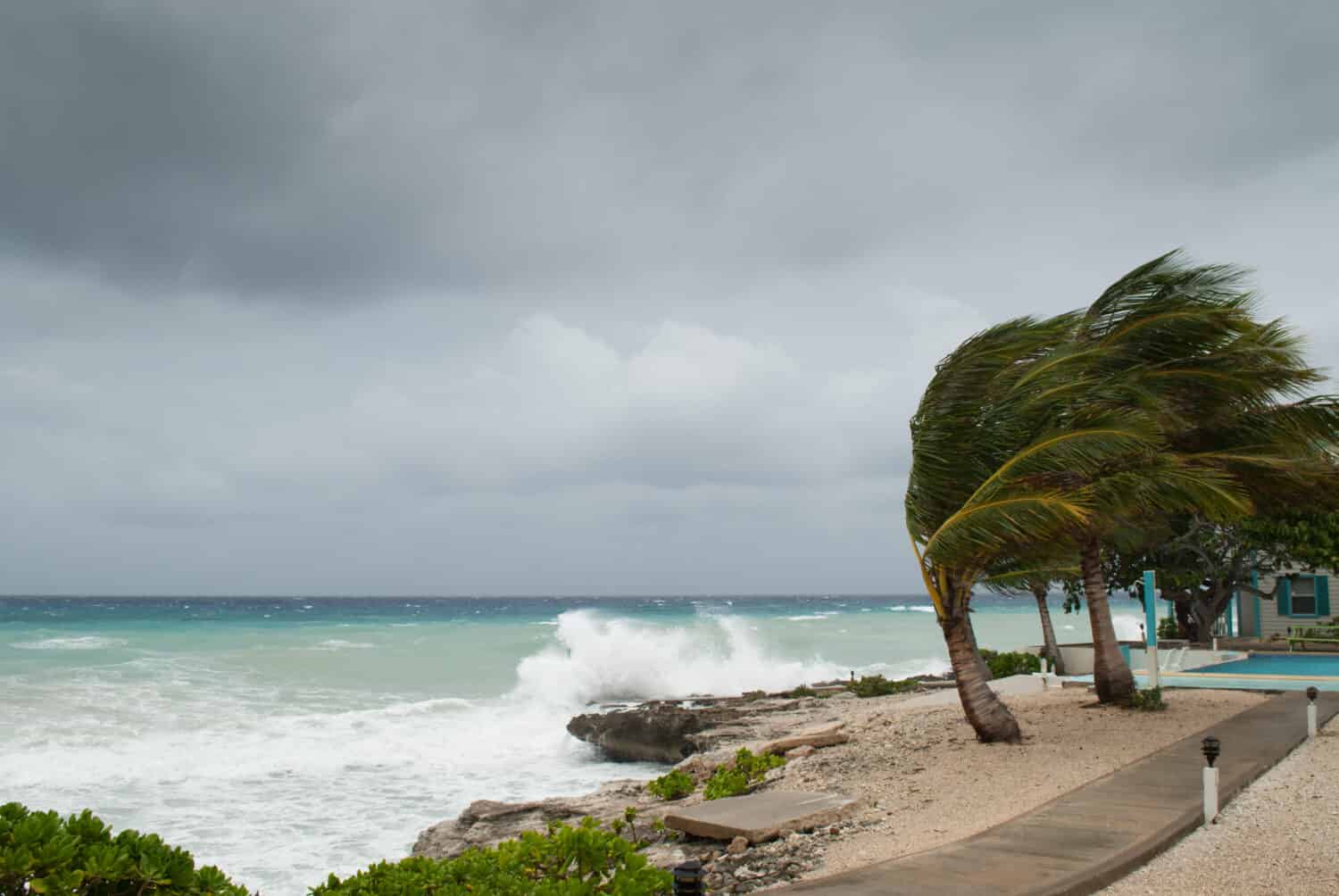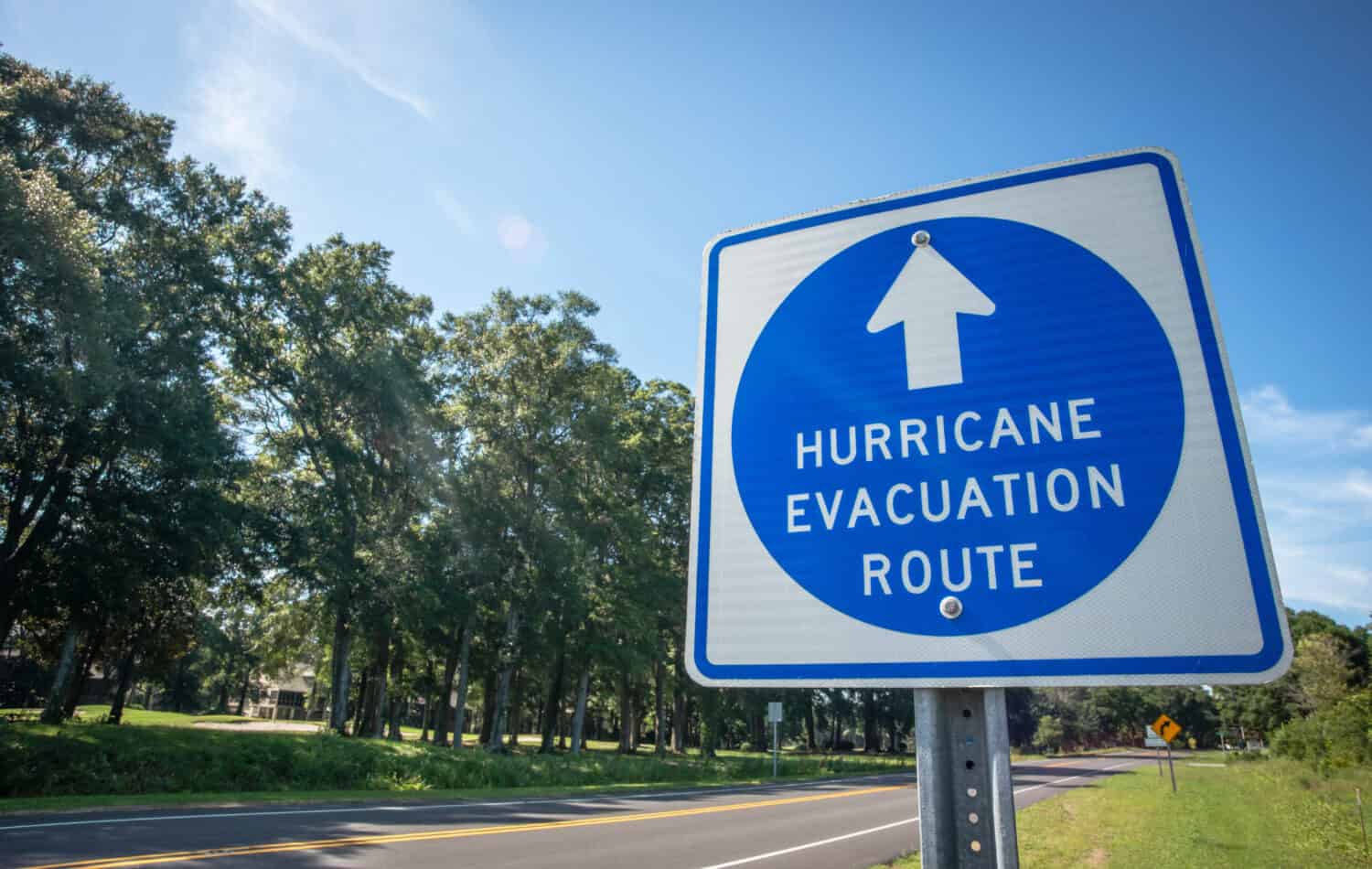The Caribbean is no stranger to hurricanes. As hurricane season begins, locals are filled with anxiety about what lies ahead. Memories of past hurricanes like Irma, Maria, and Dorian are still fresh in the minds of many. But when does the Caribbean’s hurricane season end? Today, we’ll explore the answer to this question! We will also explore the latest hurricane ever recorded, along with additional late hurricanes.
Hurricane Season Timeline

History has shown that Mother Nature can be unpredictable when it comes to hurricane season.
©Ronnie Chua/Shutterstock.com
The Caribbean hurricane season officially concludes on November 30th. However, history has shown that Mother Nature can be unpredictable. Many wonder if the latest hurricane ever could one day disrupt the end of the season.
The Caribbean hurricane season officially starts on June 1st, with the peak typically occurring in late August and early September. However, that hurricanes can be unpredictable, and one can never be too sure when each individual season will end.
Latest Hurricane Ever Recorded

Powerful ocean waves brought in by a distant Epsilon hurricane broke by on El Confital Beach.
©Tamara Kulikova/Shutterstock.com
Each year, millions of residents who live along the Atlantic and Gulf of Mexico coasts are impacted by hurricanes. Hurricanes develop in the Eastern Pacific Ocean, the Southern Atlantic Ocean, the Caribbean Sea, and the Gulf of Mexico. Below, we will explore the latest hurricanes ever recorded in these regions.
Latest Hurricane Ever in the Caribbean
According to the National Hurricane Center, Hurricane Otto holds the record for the latest hurricane in the Caribbean Sea. It formed on November 20, 2016, dissipating on November 26, 2016. It was the first hurricane since Cesar-Douglas in 1996 to survive the crossover from the Atlantic Ocean to the Pacific Ocean. Its atypical formation in the southern region of the Caribbean Sea had disastrous impacts on countries not regularly affected by strong storms. Both Panama and Costa Rica suffered severe damage.
Latest Hurricane Ever in the Atlantic Ocean
Hurricane Epsilon was a tropical cyclone that formed in the central Atlantic Ocean on November 29, 2005. It later intensified into a hurricane on December 2, 2005. It was the 14th named storm and 6th hurricane of the 2005 Atlantic hurricane season. This small hurricane reached peak winds of 85 mph before transitioning into an extratropical cyclone on December 8.
What made Hurricane Epsilon stand out was that it formed during the month of December, which is a rare occurrence. This hurricane surprised many people, as it formed later than any other hurricane ever recorded in the Atlantic basin.
Latest Hurricane Ever to Make Landfall
The latest U.S. hurricane ever recorded to make landfall outside of Hawaii was Hurricane Kate. It made landfall near Mexico Beach in the Florida Panhandle on November 21, 1985.
How Do Hurricanes Form in the Caribbean?

Each year, millions of residents along the Atlantic and Gulf of Mexico coasts are impacted by hurricanes.
©Anton Balazh/Shutterstock.com
Hurricanes generally form in warm tropical waters, including the waters around the Caribbean and the Cape Verdean Islands of West Africa. The formation of a hurricane is dependent on several factors, including warm ocean temperatures and wind. The Caribbean Sea is part of the Atlantic basin, which also covers the Atlantic Ocean and the Gulf of Mexico. It is a relatively common location for hurricane formation. Although hurricanes are more frequent in the Atlantic Ocean, Gulf of Mexico, and Caribbean Sea, they can also form in the Pacific Ocean.
Western Africa can also serve as an unexpected source of destructive hurricanes. These hurricanes typically travel across the Atlantic Ocean toward the Caribbean region. There is extensive scientific information available on how hurricanes form and operate. Many resources are available for those who want to learn more, including NOAA’s National Hurricane Center.
How Does the Frequency of Hurricanes in the Caribbean Compare to Other Regions?

Caribbean hurricane season officially concludes on November 30th.
©Drew McArthur/Shutterstock.com
In comparison to other regions, the Caribbean is known to experience a relatively high frequency of hurricanes. This can be attributed to the region’s position in the Atlantic Basin and the warm tropical waters. These factors provide a favorable environment for hurricane formation. While hurricanes can form in other areas, such as the Pacific Ocean, the Gulf of Mexico, and the Atlantic Ocean, the Caribbean is recognized as a hotspot for hurricane activity.
What Are Some Ways to Prepare for a Hurricane in the Caribbean?

To prepare for a hurricane in the Caribbean, it is important to have a plan in place ahead of time.
©Darwin Brandis/Shutterstock.com
To prepare for a hurricane in the Caribbean, individuals and communities can take several steps. It is important to have a plan in place ahead of time, including an evacuation plan and designated shelter locations.
It is also recommended to have a disaster supply kit with essential items like food, water, and medicine. Also, don’t forget to secure your property by reinforcing windows and doors, trimming trees, and securing loose outdoor items. These things could become hazardous in high winds.
You should also stay informed about the situation by monitoring weather alerts and updates from reliable sources. By taking these steps, individuals and communities can minimize the risk of harm and damage during a hurricane.
In Conclusion
Hurricane season in the Caribbean typically runs from early June to late November. The highest frequency of hurricanes typically occurs between August and October. The most recent hurricane season saw Hurricane Sam as one of the strongest hurricanes. Strong storms like this emphasize the importance of staying vigilant and properly preparing for potential hurricanes in the future.
As the world continues to grapple with the impacts of climate change, the Caribbean is becoming more vulnerable to hurricanes. It’s essential to prepare adequately for the storms and keep informed about the latest forecasts.
This year, experts are predicting an above-average hurricane season in the Atlantic, with around 14 named storms and six hurricanes. While the exact path and intensity of storms is uncertain, the best plan is to stay informed and prepared.
The photo featured at the top of this post is © – License
Thank you for reading! Have some feedback for us? Contact the AZ Animals editorial team.







